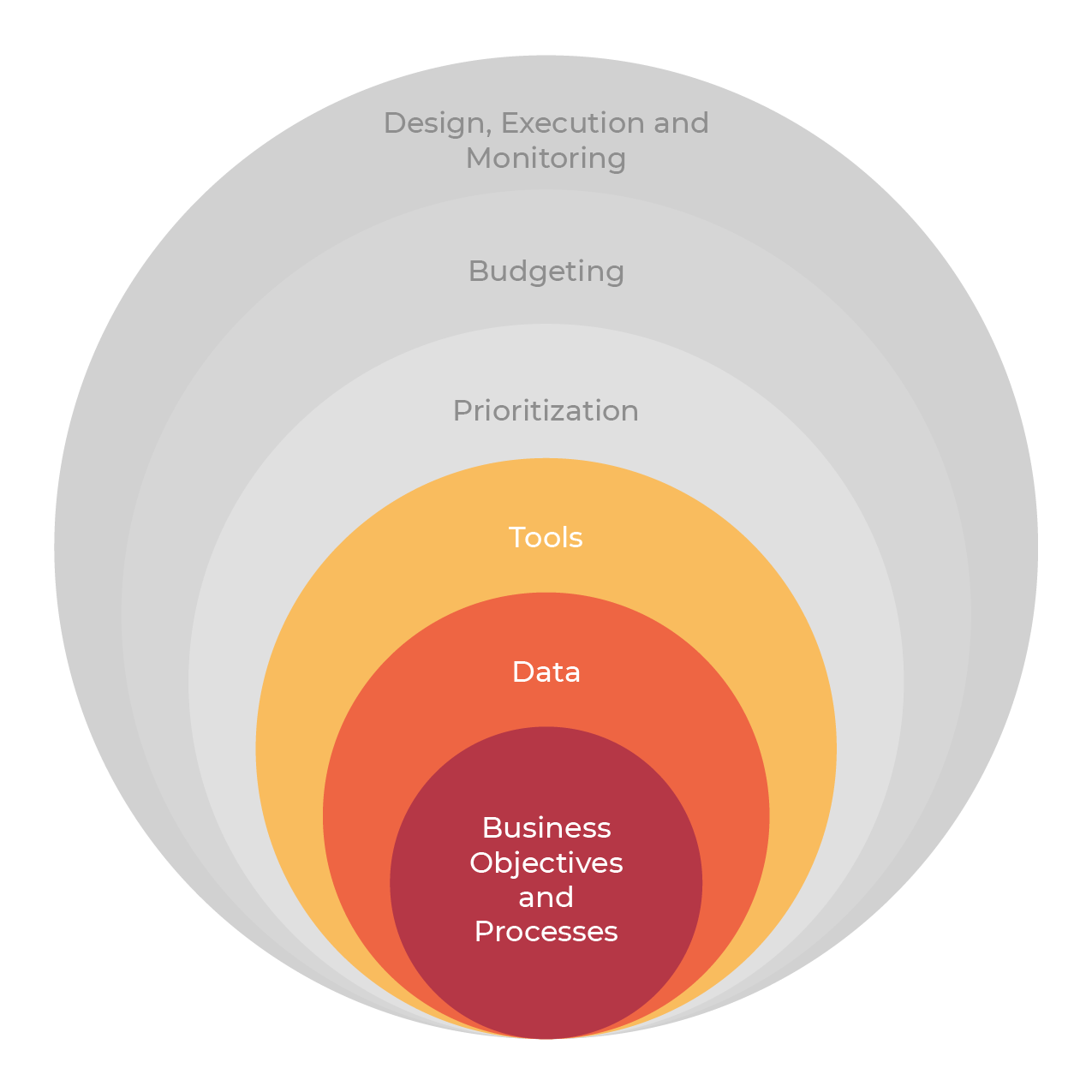After six previous posts, we are now three layers into the Integrated Asset Management “Onion”. Data by itself has limited value. The value is unlocked by the tools that you use to store, manage, and manipulate the data. Let’s start with the importance of having the right tool for the right job.
Before we get too deep into the discussion or tools, I want to first say that Excel is in my opinion one of the most powerful tools in the world. For many organizations, it is the best place to start. First of all, nearly everyone has a license (so it’s like it is free) to Excel and it can do a lot of great analysis and visualization. One of the most exciting days of my career was the day I discovered Pivot Tables (yes I am a data nerd!). However, the challenge becomes that once datasets become larger, or when you have relational dataset that differ in some ways but overlap in others you start to exceed Excel’s capabilities. That being said if you have a small to medium sized portfolio and are only concerned with a single tier of the pyramid (see our previous posts in the series), Excel is often a great way to get started on your AM journey.
The rest of the post focusing on Tools will focus on when you have moved beyond Excel’s capabilities and begin to utilize other tools.
Rather than talking about all of the different types of tools that are out there (except for the previous paragraphs on Excel), in this series, I want to focus on some of the key issues that you should think about when picking whatever type of tool/software that you are considering.
The first temptation when looking for AM software is to put Tools at the center of the onion. I want to challenge the approach of picking your software first, before you understand your overall objectives and have clarity with regards to your dataset.
There is a perceived upside to this approach. For one thing, figuring out what data you want/need is hard. Buying software is generally pretty easy and can feel like progress. Additionally, if you don’t know exactly what data you might want/need, the out-of-the-box software can help provide you with a solid head start.
The challenge arises in that every software has it strengths, weaknesses and limitations. One of the biggest issues is that many software products allow for limited configuration or customization (as this adds layers of complexity to the code). However, until you know the specifics of your desired dataset, you won’t be able to figure out which software is right for you.
I have worked with many clients that licensed a piece of software only to realize that it was not able to handle/house their data in the format and style that they wanted, or it was not able to provide the analysis or reporting they wanted. However, since they were locked into a long-term license they were tasked with adjusting their AM processes to match the software instead of using the software to enable their process. This is basically the tail wagging the dog.
I can remember having a conversation with a software support person about the way that a calculation was being done in their product. The client had requested that we work with their firm to adjust the software to meet their needs. However, the software did not do the calculation the way the client wanted. The person told me that I should go back to my client and tell them that they are wrong and the way that their software did it was the best way. Needless to say, we recommended that the client go in another direction with regard to continuing to use this product.
The roll of your AM tools is to do what you want them to do. You should not have to change the way you do AM to fit your software, instead, you should select your software based on your data and what you want to do with it.
Resist the “shiny object” that is a software demo. Be patient and take your time to find the right tool(s) for the job you want to do. This can only be done after you have clarity on your dataset (see my previous posts).
Next, we will discuss the second temptation of picking your tools, looking for the easy button!




